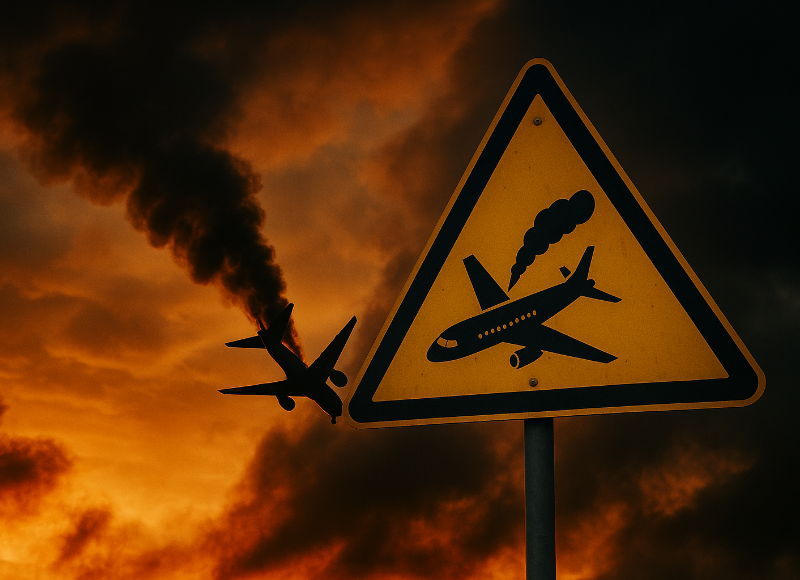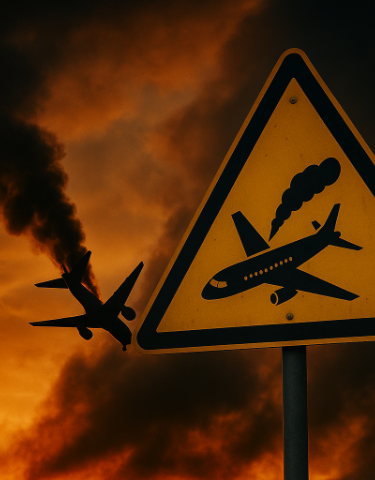The moments just after takeoff are some of the most critical in any flight. Despite the rigorous engineering, extensive pre-flight inspections, and redundant safety protocols that govern modern aviation, there are rare but tragic instances where an aircraft crashes within minutes of becoming airborne highlighting technical failure.
This raises a compelling question: how can something go so catastrophically wrong after a plane has been cleared for takeoff by all the checks and balances in place?
Here are ten plausible, often sudden or unpredictable reasons — many of which defy detection until it’s too late.
1. Bird Strike: A Sudden, Natural Threat
Even at airports with wildlife control programs, bird strikes remain a leading cause of engine failure after takeoff. Birds, especially large ones like geese, can get sucked into jet engines during climb-out, causing immediate power loss or fire. These strikes are unpredictable and happen too quickly for intervention — as seen in the famous emergency landing of US Airways Flight 1549 on the Hudson River.
2. Wind Shear or Microburst: Invisible Forces
Wind shear — a rapid change in wind speed or direction — or microbursts can develop rapidly and escape even the most advanced weather radar is one of the biggest operational risk. These downward gusts can reduce lift dramatically during takeoff or initial ascent, leaving little time for pilots to react. The 1985 crash of Delta Flight 191 near Dallas is one such case.
3. Faulty Flight Sensors: The Ghost in the System
Sometimes, a plane’s sensors feed incorrect data to the flight control systems mid-air — even if everything seemed fine on the ground. A notable example is the MCAS malfunction that caused two Boeing 737 MAX crashes. Faulty angle-of-attack (AoA) sensors misled flight software, triggering nosedives shortly after takeoff.
4. Pilot Disorientation: The Human Limit
When flying at night or in low visibility, pilots may lose external reference points. If coupled with technical risk such as misleading instrument readings or sudden turbulence, this can lead to spatial disorientation — a phenomenon where the brain misjudges the aircraft’s orientation. This can be fatal during the high-workload phase of takeoff.
5. Engine Failure + Improper Response
Modern aircraft are designed to fly even if one engine fails one of the aviation risk management strategies. But if an engine loses power seconds into flight, the aircraft can become difficult to control, especially if the pilot applies the wrong inputs. In such cases, a perfectly survivable technical issue can turn into a catastrophic event due to human error under pressure.
6. Hidden Software or Logic Failures
Complex flight systems sometimes behave differently in the air than on the ground. Certain failures may not trigger until specific parameters are met — such as airspeed or altitude — meaning the issue can go undetected during pre-flight checks. Undocumented logic behaviors or software bugs may take control away from pilots and crew resource management at the worst possible moment.
7. Sabotage or Explosives: The Unthinkable
Though rare, sabotage or undetected explosive devices can still evade airport screening systems and detonate after takeoff. Past incidents have involved insider threats or weaknesses in security protocols, resulting in inflight disintegration.
8. Latent Structural Failure
Even well-maintained aircraft can have hidden stress fractures, corrosion, or structural fatigue that don’t show up during visual inspections. These weaknesses may only manifest under the stress of takeoff. The 1985 Japan Airlines crash was traced to a poorly repaired bulkhead that gave way under pressure.
9. Flight Control Surface Jam or Detachment
In some cases, mechanical components such as the rudder or elevator may become jammed or detached mid-flight due to a manufacturing defect or missed maintenance irregularity. These failures typically appear only when aerodynamic pressure increases — during takeoff or climb — and can render the aircraft uncontrollable.
10. Cockpit Miscommunication or CRM Failure
Even with automation and checklists and other risk mitigation precautions, cockpit miscommunication during high-stress situations can lead to delayed or incorrect responses. A momentary lapse in crew resource management (CRM) — such as confusion over an alarm or who has control — can have fatal consequences, particularly in the tightly compressed window after takeoff.
Conclusion: The Edge of Safety and Uncertainty
Aviation today is safer than ever — each flight is backed by thousands of hours of engineering, regulation, and pilot training. Yet, the very complexity of modern aircraft and the unpredictability of real-world conditions mean that no system is foolproof.
Crashes shortly after takeoff are typically the result of rare, rapidly evolving scenarios where even a small failure can cascade, especially if it coincides with environmental stress or human error. Understanding these potential triggers is vital — not just for investigators, but for designers, regulators, and aviation risk professionals committed to making the skies even safer.














